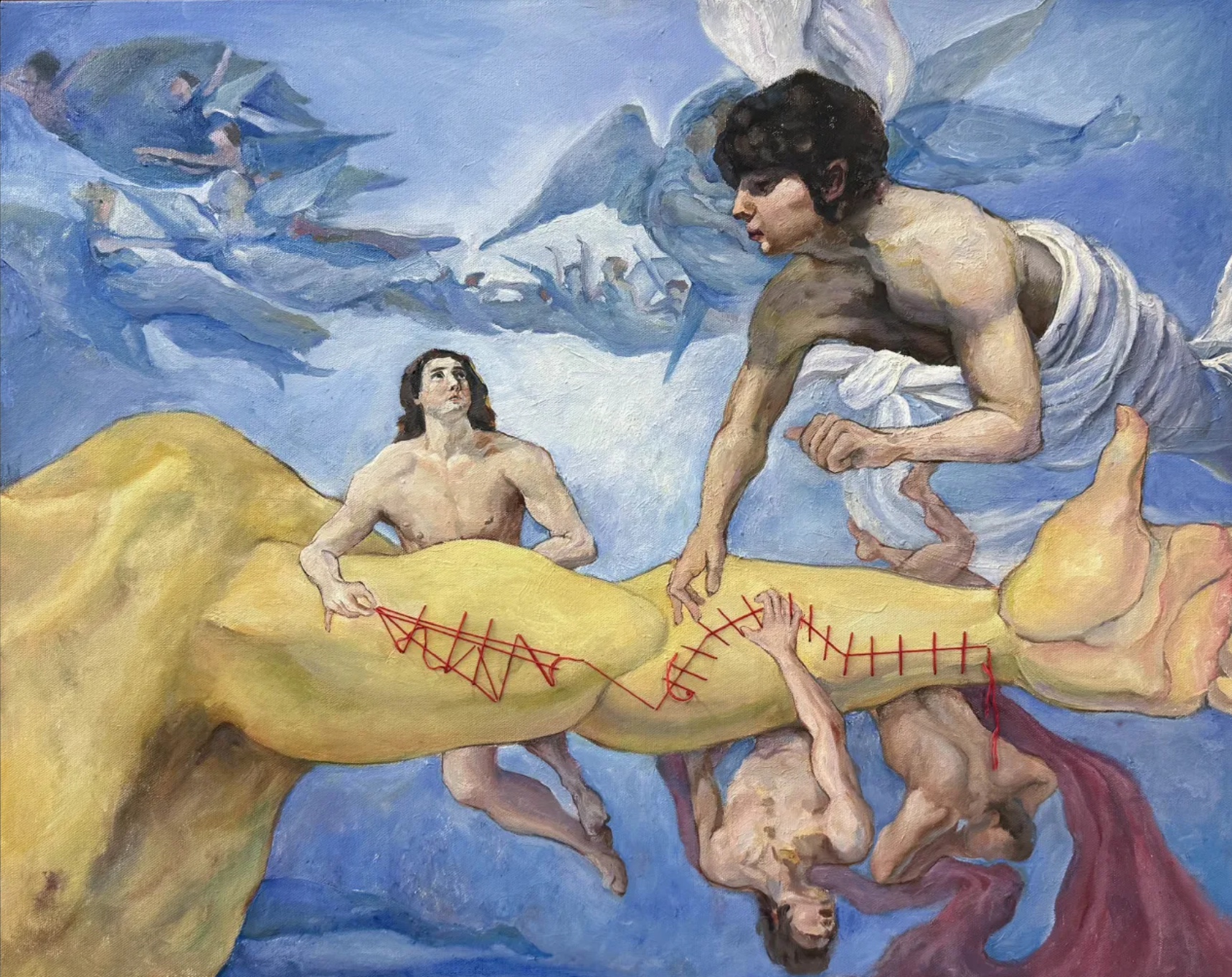
Jason F., Reach, oil on linen.
Reach is part of a larger polyptych that explores my aspirations and the pursuit of self-contentment and artistic fulfillment. With an outstretched arm, the central figure represents my yearning to reach a place of happiness and contentment in my work. Surrounding the central narrative are figures falling, symbolizing my fears of failure and the risk of falling short of my aspirations. These figures are a stark reminder of the uncertainties and challenges accompanying the pursuit of excellence. The stitching conveys a sense of mending as if trying to heal or stitch together the wounds of failure while maintaining the pursuit of perfection. It’s an acknowledgment that the path toward fulfillment is never seamless but rather a process of repairing and reconnecting with oneself through each setback. Through Reach, I aimed to express the duality of my journey—the hopeful striving towards an ideal future and the ever-present fear of failing to attain it.
24/25 Winners
Poetry:
‘The Wetland’ by Effie Li
Effie Li’s “The Wetland” is a richly tactile poem that immerses readers in a heavy, humid landscape. Through rhyme and alliteration, the poet captures the oppressiveness of the marsh, creating a reading experience that feels like wading through the titular environment. This is a poem that stays with you, its lush imagery haunting and inescapable, clinging to you with the same stickiness as the “silt and sweat” in the poem.
Honourable Mention:
‘the funny thing about childhood’ by anonymous
Prose:
‘Intricate Rituals’ by Mei Lin
‘Intricate Rituals’ is a brilliant paper whose insightful vision is supported admirably by nuanced analysis. It's clever and confident, and, like the best literary criticism, it faces complexity head-on. But most impressively, Mei Lin exhibits mastery over the rhythms of language, her voice sparkling in a way that not many academic writers can manage. There's no mimicry here, only authentic discovery, and it's a joy to follow along.
Honourable Mention:
‘The Poisonous Book & other Addictions’ by F.
Visual Arts:
‘Bass Fish’ by Ellen Ma
‘'Bass Fish’ is a unique display of how technical artistic skill can be reapplied and reworked to not only fit new digital forms, but to enhance them. In her combination of pixellation and realistic colouration, Ellen Ma manages to create a work of art that uses digital illustration not only as a medium through which to represent the physical, but as a way to enhance it, successfully using virtual content to divide the vibrant colouration of the analogue model, draw attention to its beauty.
Honourable Mention: ‘Spectral Screens’ by Nina Liu
New Media:
‘Max’s Beats: Volume 1’ by Max Prentice
Max Prentice presents a diverse collection of unique song clips in his beats. Each clip’s novelty captures listeners, yet despite this, the four work cohesively to present a body of work that shows all the potential for expansion into its own soundtrack. While digital music is often criticised for its lack of nuance, ‘Max’s Beats’ avoids any possible such criticism, presenting carefully composed tracks that each remain unique and engaging.
Honourable Mention: ‘ORPHEUS’ by Mei Lin